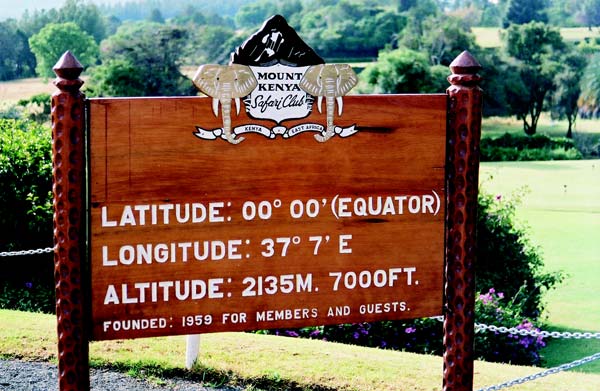
While suffering through a formal scientific education, I was exposed to a vast number of astonishing, explicit truths that almost always manifested themselves in some mathematical formulas. Naturally, I believed them because I was told to do so by a teacher, but some of them were harder to swallow than others. The one I really had trouble believing was that when you flushed your toilet in the southern hemisphere the water spun in the opposite direction than it did here at home or at school. It was in the ninth or tenth grade when they first tried to sell me on this principle. I spent the next several months watching the water every time I flushed or washed my hands to make sure that it circled in the same direction; surprisingly, it did. They named this phenomenon, “The Coriolis Force.” I’ve never forgotten it, but it took almost thirty years before I could finally put it to the supreme test.
I was beside myself with pleasure. Barb and I were finally going to East Africa, with so many new and exciting adventures in store for us. All of the magnificent animals, an actual safari, Mt. Kilimanjaro, the Ngorongoro Crater—the list was endless, and I was ready. Even more important, I had a life-long question that I hoped to find the answer to. Does “The Coriolis Force” really exist?
The first test was done at the Nairobi airport. We had left Cairo on an absolutely cloudless day and followed the Nile River due south. The flight tracked the river for hours before the terrain changed from arid desert to occasional trees, then finally to the Rift Valley of Kenya. We were in the air for almost eight hours and by the time we had touched down, gone through customs, and cleared immigration, I found myself eager to find a restroom and test the hypothesis. My trip to the washroom was a success, and the theory proved to be correct— the water spun clockwise!

The second test took place at the Mt. Kenya Safari Club where we were lucky enough to spend a couple of glorious days. The grounds are beautifully manicured, and the guest cottages are out-of-this-world. On our first evening there, we enjoyed a long, seven-course meal in the main lodge and returned to our cottage to find a roaring fire in the bedroom fireplace and a hot water bottle between the sheets for our sleeping comfort. But the most spectacular room of all was the bath. It contained a huge sunken tub nestled up to a floor-to-ceiling glass wall, outside of which grew a collection of exotic equatorial plants. An ideal setting for my test. While the main lodge itself was a few meters to the north of the equator, my huge tub was located 100 meters south. Not wanting to waste the water, I luxuriated in the bath for almost an hour and then eventually pulled the plug. To my absolute astonishment and amazement, the water once again rotated clockwise.
The final and by far the most detailed experiment occurred about a week later in the Kenyan village of Nanyuki. An elaborate demonstration was rigged to illustrate this hard-to-fathom phenomenon. A shallow pie pan with a pinhole in the center was filled with water. Several small sticks resembling toothpicks were floated on the surface, and the plug covering the hole was removed. This test was repeated three times over a twenty-meter distance. When one walked ten meters into the Northern Hemisphere, the sticks rotated counter-clockwise as the water drained from the pan. The reverse was true when one walked ten meters into the Southern Hemisphere. And, lo and behold, when performed on the monument, which designated the actual equatorial line, the water did not rotate at all—it merely drained out.
My faith in science has been restored. I leave any practical application of the principle to you.